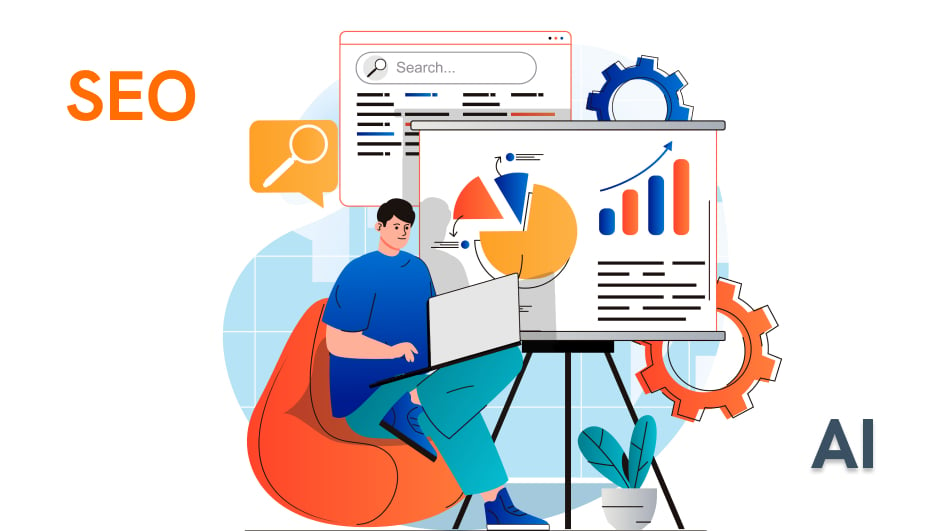Google’s AI Overview: The Click Thief
According to Forbes, nearly 60% of all web searches now yield no clicks at all. Google’s AI Overview now answers user queries directly in the search results. Instead of clicking through to a website, users often find their answers without leaving Google. As a result, businesses are seeing less traffic to their websites through informational blogs and product or service pages. This means less opportunity for your content to drive discovery, awareness and conversions.
For years, SEO strategies focused on keywords, backlinks and technical optimization. Those tactics still matter, but they no longer guarantee visibility in a search environment dominated by AI-generated responses. Simply ranking on page one isn’t enough if Google’s AI grabs attention before anyone reaches your site.
Why PPC Isn’t Safe Either
Pay-per-click (PPC) advertising was once the safety net for businesses losing ground in organic search, but even that landscape is shifting. AI-powered results are now pushing ads further down the page or bypassing them entirely by answering questions directly. This means fewer impressions, higher costs per click and more competition for limited visibility. Relying solely on paid ads is no longer a guaranteed way to reach your audience. To stay competitive, businesses need to balance PPC with strong, content-first strategies that build lasting authority beyond the paid slot.
It’s Not Just Google
While Google’s AI Overview gets most of the attention, it isn’t the only player reshaping search. Bing has integrated AI overviews directly into its results, delivering quick, conversational answers that reduce the need to click through to websites. Meanwhile, standalone tools like ChatGPT, Perplexity and other AI chatbots are becoming the default starting point for many users, especially younger audiences like Gen Z, who prefer direct answers over browsing multiple sites. This shift means the competition for attention isn’t limited to traditional search engines anymore. To maintain visibility, businesses must regularly account for a growing ecosystem of AI-driven platforms that are changing how people discover and interact with information online.
Content-First SEO: Your Best Defense Against AI
With AI taking up more space in search results, the best way to protect your visibility is to create content that goes beyond what a quick summary can deliver. Content-first SEO is about building real value for your audience. When your content educates, engages and builds trust, it stands out in ways an automated answer cannot.
Writing for People, Not Robots
For a long time, SEO focused heavily on keywords, tags and backlinks. Those elements are still important, but they are no longer enough. The sites that succeed today are the ones that write with people in mind. That means offering clear explanations, useful insights and genuine perspectives. Whether it is a detailed guide, a case study or thought leadership content that helps the reader first is more likely to earn attention and clicks.
You may be toying with the idea of utilizing AI to produce more content for your website, but issues arise when your content starts to feel generic or incomplete. AI is great at helping copywriters generate ideas or formulate outlines, but it struggles to fully understand your business and its goals. When drafting new content, we recommend incorporating testimonials, real-world examples and original insights that AI cannot replicate.
Here at TKG, we practice what we preach. Here are some examples:
Testimonials

On the Plakas Mannos website, TKG added client testimonials for each practice area to highlight credibility.
Real-World Examples

To add credibility and connection, TKG uses real business examples to support the content in Rice’s blog.
Original Insights

By incorporating original insights from 415 Group CPAs, TKG makes each blog post more authentic and relatable.
AI Summaries: The Exception to the Rule
While most content should be written for people first, AI-friendly summaries at the top of blog posts are an important exception. Large language models (LLMs) and AI platforms often rely on these summaries to generate quick answers, so including a concise overview increases the chances your insights appear in AI overviews and direct response tools. These summaries capture the key points clearly without replacing the full, in-depth content, ensuring your posts remain both helpful to readers and visible in an AI-driven search landscape. This content should appear before any H2 headlines, with key information presented as early as possible.
Start Winning Back Clicks Today
Partner with TKG to develop a content-first strategy that drives engagement, builds authority and ensures your insights are visible across all search engines and AI platforms. Don’t let AI summaries and chatbot answers steal your traffic.



